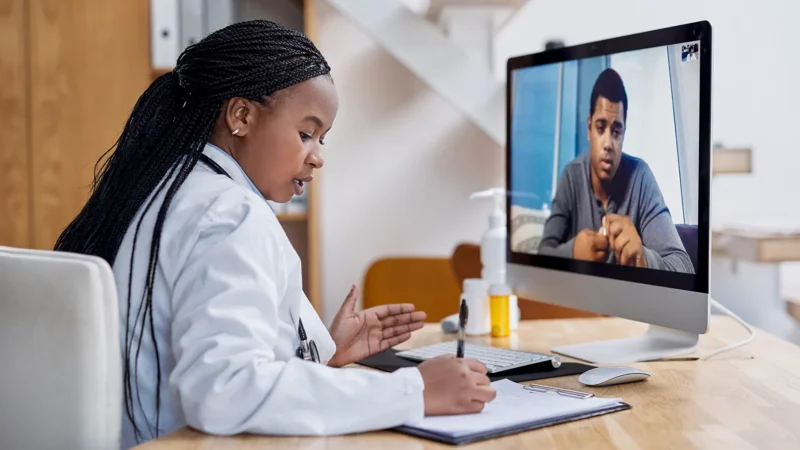Blood pressure is the count of force applied by the heart to pump blood around the blood vessels. The normal blood pressure is usually 120/80 mm Hg, and blood pressure above this count is referred to as hypertension. The blood pressure with the count 90/60 mm Hg or below it refers to low blood pressure or hypotension.
In healthy people, low blood pressure without any serious medical cause is usually temporary and can be treated and fixed with the help of appropriate measures. However, take advice from your physician because only he can guide you better after a proper checkup.
How To Raise Blood Pressure?
Many times, low blood pressure occurs due to some temporary reasons and may get resolved with the help of diet management and other self-care strategies. The symptoms of such a temporary drop in blood pressure include lightheadedness, nausea, and dizziness. Let us go through some quick routine fixes for low blood pressure.
1. Eat A Balanced Diet
Sometimes low blood pressure is actually an indication that a person is not taking a well-balanced diet. The body that is too low on essential nutrients to function properly may also complain about low blood pressure. Taking a well-balanced diet that provides all essential nutrients to the body can help to maintain and keep going with normal blood pressure.
You can look to add more foliate sources to your diet. Additionally, the intake of vitamin B12 and iron-rich foods can help to overcome diet-induced anemia, which may also be a possible reason behind low blood pressure. In addition to dietary changes, your physician may even prescribe some nutritional supplements if required.
2. Limit Or Avoid Alcohol
Alcohol is an unhealthy beverage that can lead to many health outcomes. Excessive intake of alcohol can disrupt normal blood pressure, which may even result in low blood pressure. Many times alcohol consumption interferes with certain medications causing blood pressure to lower down.
In order to maintain good cardiovascular health and steady blood pressure, it is necessary to avoid or limit alcohol. A number of programs and facilities are designed to help people overcome addiction in every possible way. One can also look to avail a residential treatment in Texas which provides a luxurious beginning to your addiction treatment.
3. Drink Plenty Of Water
A person might also experience hypotension due to dehydration. Thus, it is necessary to maintain an optimal hydration level. Make sure to keep drinking water and fluids throughout the day. Hypotension can occur when the body loses water too quickly. A body can quickly lose water due to vomiting, diarrhea, heavy sweating, or fever. Make sure that you are taking enough water to replace depleted fluids.
4. Take Smaller Meals
Large and heavy meals can also result in low blood pressure; however, it is common in older people. After having a large and heavy meal, the excess blood rushes towards the digestive system, causing a decline in blood pressure. You can choose to have smaller meals in order to maintain steady blood pressure and avoid a sudden drop in blood pressure.
Limiting the intake of refined carbs in food can also help to avoid a sudden drop in blood pressure. Instead of refined carbs, you can look to add more whole grains and complex carbohydrates; these are more beneficial for health and assist in maintaining normal blood pressure.
5. Slow Changes In Position
Many times a drop in blood pressure is due to sudden changes in body position. This may occur when you are suddenly standing up or sitting down. Sudden position changes during exercise might also result in low blood pressure. In order to avoid such conditions resulting in low blood pressure is to gently change position.
If you are exercising, then never forget to always begin and end with a proper warm-up. Doing some stretches such as biceps stretches and leg stretches will help to avoid excessive straining around muscles, which can also result in low blood pressure.
6. Add Some Salt
Adding a little amount of table salt to your food also helps to slightly raise your blood pressure. Table salt is the source of sodium which is the actual ingredient that raises blood pressure. However, be cautious of the amount of salt that you add.
You may ask your physician and dietitian about the right amount of it without any serious consequences. Avoid food sources with large amounts of hidden salt, such as processed and packaged food, as it is injurious to health.
7. Check Your Sugar Level
High blood sugar level also results in low blood pressure. You can keep monitoring your blood sugar level to identify if it is the cause of low blood pressure. You can seek your physician’s advice in this regard.
Your physician might even suggest dietary changes along with certain medications to keep the condition under control. Adding a little exercise routine is beneficial in maintaining blood sugar and blood pressure levels.
8. Wear Compression Stocking
Another effective way to deal with postural hypotension is through using compression stockings. These help to prevent blood pooling down to the legs when changes in position occur. It is very uncommon, and only a few might experience it. It usually occurs in people with middle and older age.
9. Get Your Thyroid Examined
In a few cases, low blood pressure is an indication of underworking thyroid glands. The thyroid glands do not produce sufficient amounts of hormones, and as a result, a person can also experience low blood pressure. If it is the case, then the doctor may prescribe some medications to fix this underlying issue.
Take Away
A relatively low blood pressure level is referred to as hypotension. Low blood pressure can occur due to some temporary reasons, and it might also be due to some serious medical issue. There are some effective tips that help to raise blood pressure to normal. However, be cautious and ask your physician if you require any medication.





Recent Comments